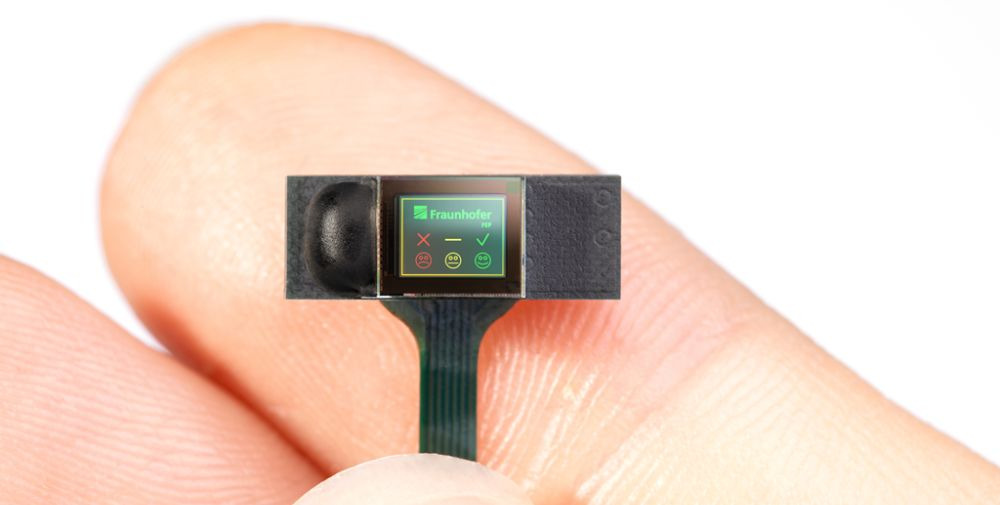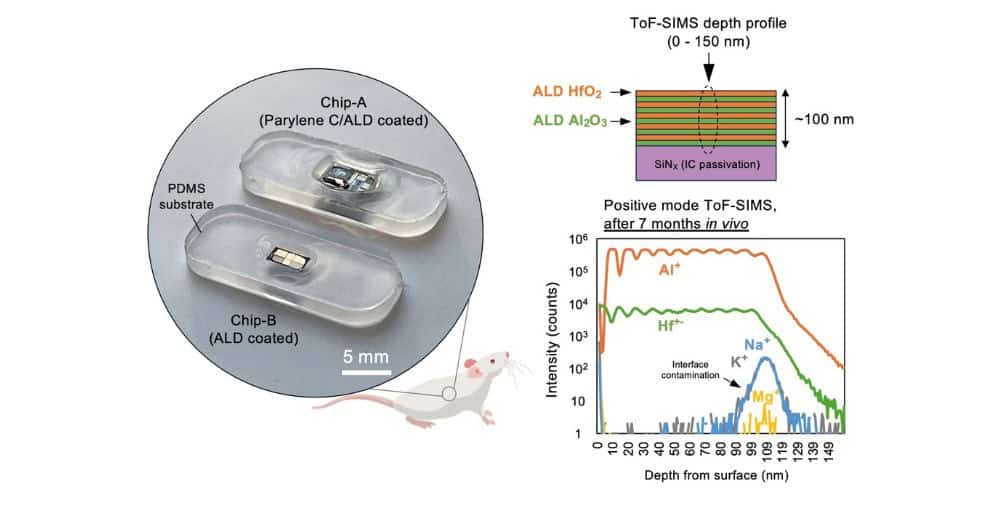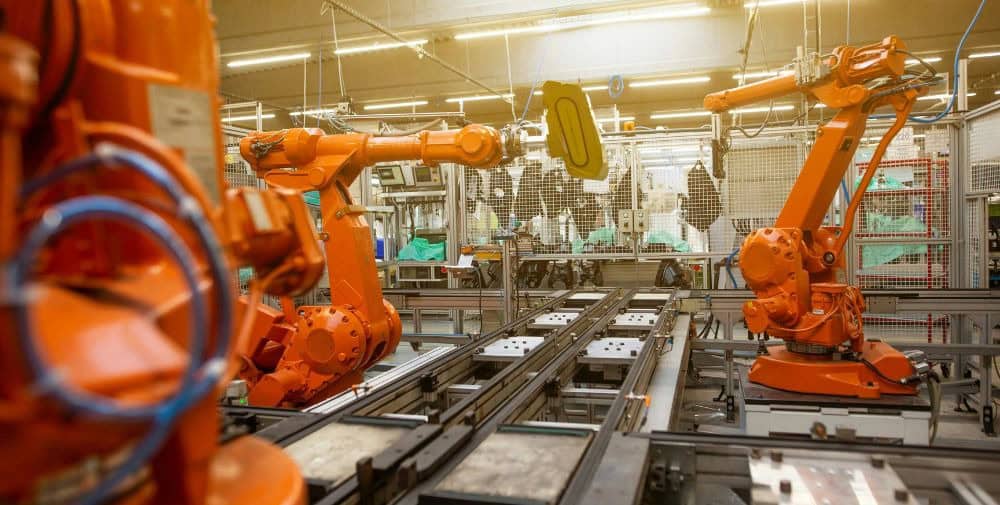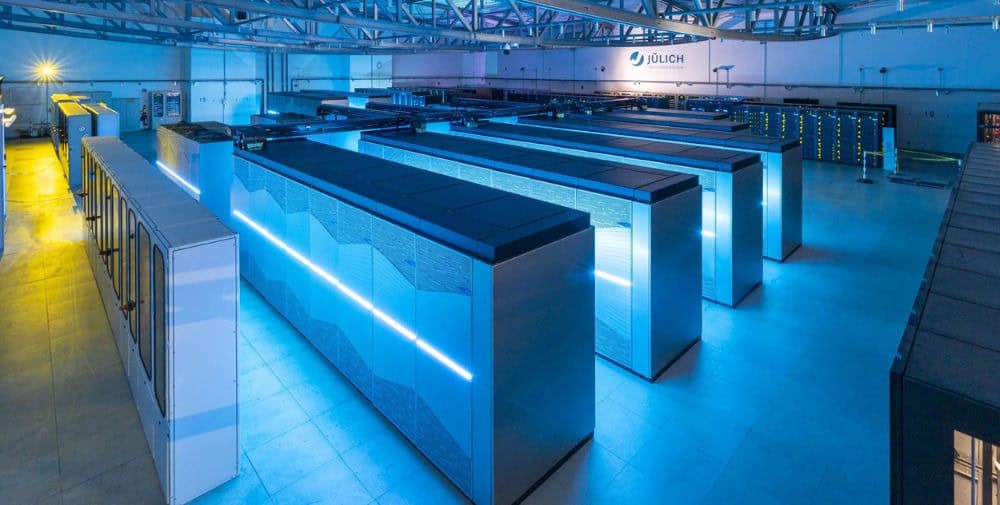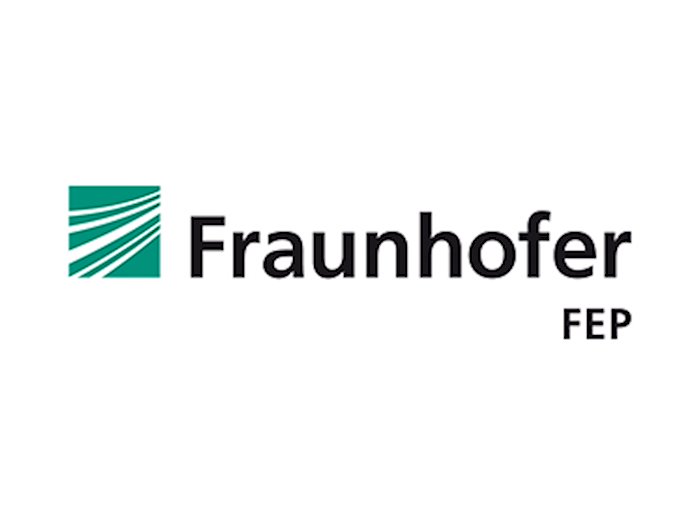
In order to read navigation data or speeds, motorcyclists must look down to read the information on the handlebars or speedometer. Moments when attention is diverted away from the road or terrain. Helmets with integrated displays in the viewing area can provide more safety for this and also display useful information in poor visibility conditions.
In collaboration with GLOBALFOUNDRIES Dresden, Module One LLC & Co. KG and digades GmbH, Fraunhofer FEP researched a solution for energy-saving and high-resolution OLED microdisplays within the “Backplane” project. Such small displays are efficient helpers for displaying navigation data in, for example, motorcycle, ski or bicycle helmets, but can also provide support in a medical context.
However, the information from the display must be mirrored into the eye of the viewer via suitable optics. digades GmbH, an experienced system integrator for electronics, contributed its expertise in the development of head-up displays for helmets to the project. Under the TILSBERK brand, the company already sells monochrome navigation displays that can be installed in motorcycle helmets as retrofit head-up displays. Optimal for this application would be multicolor displays that are also more energy-efficient than the current solution.
Dr. Uwe Vogel, deputy institute director of Fraunhofer FEP, is pleased: “Within the Saxony-funded research project “Backplane”, it was possible to create foundations that enable the development of innovative microdisplays. We would now like to use these foundations to transfer them into future products in the longer term with Saxon manufacturers.”
Within the framework of the project, it has been possible to present the world’s first multicolor OLED microdisplay with the lowest power consumption compared to all available microdisplays. The distinguishability of the signal colors red and green is of particular importance here.
Tim Berger, managing director of digades GmbH, adds: “The “Backplane” project is a good example of cooperation between research and business players and targeted funding in Saxony. Only this made it possible to create microdisplays that are really interesting for industry and meet their requirements.”
The unique architecture of Fraunhofer FEP’s ultra-low power OLED microdisplays enables extremely power-saving displays for simple, space-saving and thus ergonomic systems. With the now multicolor version (with two primary colors) in QVGA resolution (320 x 240 pixels), applications beyond pure displays can be addressed, including navigation displays in motorcycle helmets.
Based on the OLED-on-silicon technology developed earlier, the Fraunhofer FEP scientists are now even better able to support regional, national and international application partners with optimized and customized developments of CMOS backplane wafers as well as adapted microdisplay modules and – in cooperation with partners such as digades – up to optical systems. The application and customer-specific requirements are always in the foreground – be it for the evaluation of feasibility or also the upscaling of individual technologies, microdisplay products and systems.
There is still a lot of research to be done to ensure industrial applicability of the technology for the development of the innovative displays, e.g. for later use as an integrated head-up system for various types of helmets: The optical modules must be adapted to the new power-saving microdisplays, and the drive electronics must also be optimized. Connection development and qualification are required before the displays can go into series production. To this end, the partners digades and Fraunhofer FEP initially want to work together on an evaluation kit that future customers can use for initial technology tests.
At Fraunhofer FEP, full-color microdisplays are on the agenda in addition to monochrome and multicolor low-power displays. Here, the feasibility and first implementation steps were demonstrated for the first time in a 28 nm CMOS backplane technology on 300 mm wafers. This enabled the production of impressive devices with a display diagonal of 0.18 inches, pixel sizes of only 2.5 micrometers and resolutions of up to 10,000 dpi. The researchers at Fraunhofer FEP also want to use these results to open up further new areas of application and, together with partners such as digades GmbH, take the next steps towards industrial maturity.
About the project “BACKPLANE”
Deep-submicron CMOS process technology for driving integrated microdisplays and evaluation circuits of optical sensors
Funder:
Saxon State Ministry of Economics, Labor and Transport
Funding code 100392259
Term: 31.12.2019 – 31.10.2022
Associate partner:
– GLOBALFOUNDRIES Dresden Module One LLC & Co. KG
– digades GmbH
– Fraunhofer Institute for Organic Electronics, Electron Beam and Plasma Technology FEP
The project partners would like to thank the funding body (SMWA) and the project sponsor Sächsische Aufbaubank (SAB) for their support, which made the successful implementation of the new ultra-low power microdisplay concepts possible.
– – – –
Further links
👉 www.fep.fraunhofer.de
Photo: Fraunhofer FEP, Claudia Jacquemin
